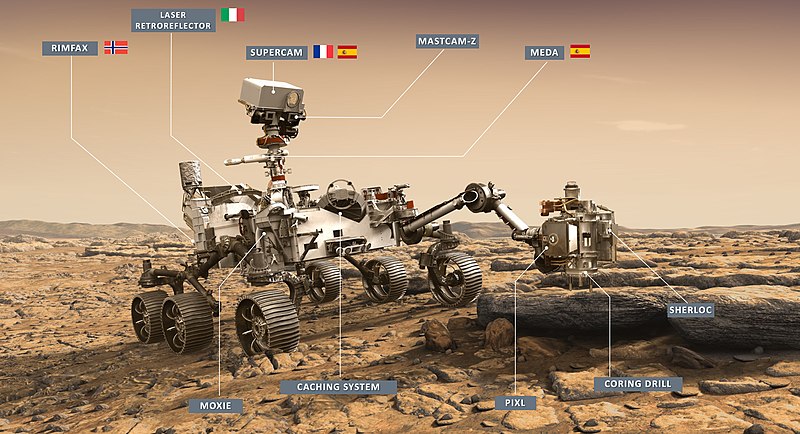WLU’s Dr. Mohamed Youssef explains the Perseverance rover and its mission
Almost seven months after it left Earth, the Perseverance rover successfully landed on Mars in February. The rover will spend two Earth years, one Mars year, exploring the planet and meeting its mission objectives. Its main goal is to expand knowledge of Mars’ geology and to look for signs of ancient life. Professor of Physics and Physical Sciences Dr. Mohamed Youssef provided a further explanation of the Perseverance rover and its mission.
“Since the mission’s priority science goal is to answer the question about the ancient past and the potential for life on Mars, one of the biggest upgrades to the rover is its ability to collect rock samples for future study. The already established plan is for the samples to be stored, ready for someone – or another probe or rover – to pick them up later… The rover also helps lay the foundation for future crewed missions by precisely measuring the radiation exposure and the required shielding. Although no human was included in the landing on Mars, the names of about 11 million people were sent to Mars. The names were written on three silicon microchips the size of a thumbnail using a very small print, thinner than the human hair…” Dr. Youssef continues on to explain that human missions are not that far off as scientists continue to investigate ways around the radiation and atmospheric issues of the planet. He adds that NASA has plans to have Americans on the planet by 2030, but private industries may make that happen sooner. The rover is also joined with a small helicopter drone, Ingenuity. Ingenuity’s main job is to take aerial photos and test flight possibilities in the atmosphere.
Dr. Youssef was recently interviewed by WTRF.
More information can be found on NASA’s website: https://mars.nasa.gov/mars2020/. Additionally, Dr. Youssef can be reached by email [email protected].
Emma Beatty is a first year student at West Liberty University majoring in Human Biology. She has the intentions of going on to become a Physician Assistant....







